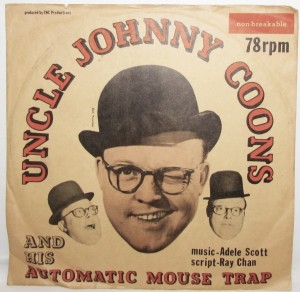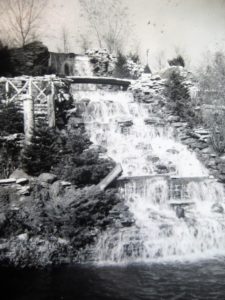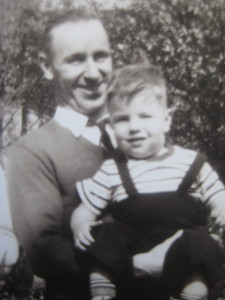I have many fond memories of childhood in 1950’s Chicago and a few of the more vivid ones revolve around a strange collection of politically and socially incorrect neighborhood men who would gather in my Uncle’s garage. I didn’t know their real names as they all had nicknames given to each other years before, since they must have known each other for a long time.
They were a motley crew who would gather together in the afternoon and I would see them on Saturday when I visited my cousin, who lived within biking distance. They may have gathered on other days, but it is only then that I saw them. They were Gramp’s friends.
When my cousin and I would finish our day of biking and playing, we returned to his house for something to eat and would head to the garage to see what the old men were up to. My aunt would not step foot in the garage and sometimes brought our sandwiches to the door and we would go get them.
Gramps, my cousin’s grandfather, lived with my Uncle’s family and had pinups of Betty Page and other women lining the garage walls, the most famous, of course, being Marilyn Monroe. It was the first time I ever saw women without all their clothes on. Being eleven years old, I wondered what the attraction was and by the following year, I found out.
More interesting to me than a collection of semi-nude women were the male sexagenarians assembled around a table playing pinochle or some other card game, and sometime during the afternoon, checkers.
There was “Gumdrops,” a lanky man with bad teeth always eating from a box of Mason’s Dots or Jujifruits and was prolific in stories about women. “Women are like Jell-o,” he would say, “it’s fun to watch them wiggle.” Another idiom I didn’t understand at the time.
There was “Checkers,” an average looking guy except for unruly hair and a a few missing teeth in front which would affect his speech as his tongue raspberried through the openings like Daffy Duck. Yes, he liked to play checkers and sometimes brought his box and board over with him.
Then there was “Shoes,” who received his nickname deservedly. Shoes was retired from the sanitation department. In those days, workers were simply known as garbagemen. He would always save the discarded shoes that fit him which were tossed out by others. Sometimes he would have the soles or heels replaced and then had, virtually, a new pair of shoes at little cost. He was known for never having to buy a pair of shoes since the day he started work. Shoes, having ulcers, would drink a half pint of cream (which he usually got from my uncle) before doing shots with the others.
Finally there was “Gramps,” the only guy there with grandkids (although all of them were divorced as I recall). Gramps was my Uncle’s father and regardless of whether we kids were around, could not complete a sentence without adding a few curse words for emphasis.
It was these men, on a Saturday afternoon, who let us sit and watch and listen, and learn. We learned about women, we learned new words and we learned a bit about life. Certainly not the best role models, but they were real, they were honest and straightforward and they answered questions we kids would be afraid to ask anyone else.
In a way, they inspired me and, to their credit, I still remember them fondly.


